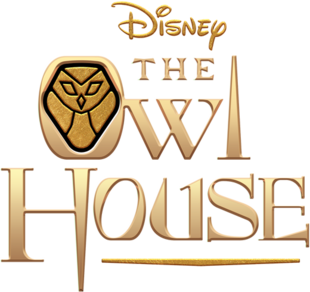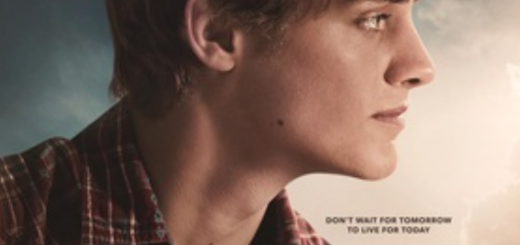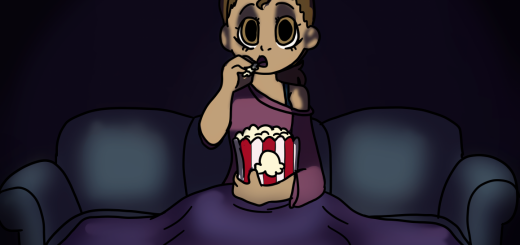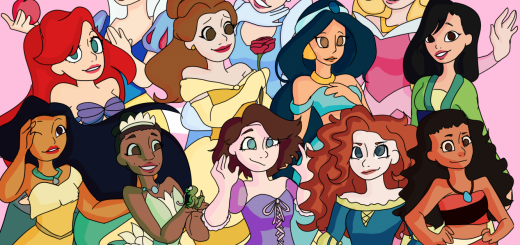The Owl House: the LGBTQ+ fantasy adventure show we all need
 From Wikipedia under fair use.
From Wikipedia under fair use. As a kid, I always dreamed of having magic powers. The concept of being able to manipulate reality with a simple wave of my hand fascinated me. Every time I closed my eyes, I would picture myself running around a world of fantastical whimsy where I could be whoever I wanted and do whatever I dreamed of. Magical fantasies like these fueled my creativity back then, and they haven’t left me since.
Perhaps this is why I find myself so drawn to The Owl House, a show with demons and witches walking the streets of a town built on the corpse of a titan. The Owl House is a show made for people who love the wild worlds of fantasy, and the show’s protagonist, Luz Noceda, is one of these people herself.
Luz is a fantasy obsessed Dominican-American teenage human who comes across a portal that transports her to the Demon Realm. Once there, Luz finds herself in the Boiling Isles where she meets Eda Clawthorn, a wanted witch also known as “The Owl Lady”, and King, a cute, yet fierce demon that Eda takes care of.
Luz quickly falls in love with the Boiling Isles, finding it to be everything she wished the human world was: fun, exciting, and most importantly, a place for her to be herself, free from judgment. This new world inspires Luz to dedicate herself to becoming a witch under the tutelage of Eda, despite not having any biological magical abilities. Through this quest, Luz ultimately finds family where she had least expected, prompting her to weigh whether or not she should return to the human realm, if she is able to at all.
The Owl House is a show meant to be a safe space for people who don’t “fit the mold.” It’s perfect for all the geeks, nerds, creatives, and countless others beyond and in-between. By placing an emphasis on accepting others, a place is created for LGBTQ+ who often feel like they don’t belong among their peers as they navigate a society that isn’t always accepting of their identity.
One way that The Owl House achieves this is by having a bisexual character who winds up getting a girlfriend. In season one, Luz goes to school at the Boiling Isles called Hexside School of Magic and Demonics in an attempt to learn magic. There she meets Gus Porter, the highly intelligent president of the Human Appreciation Club, and Willow Park, a shy plant-loving witch. Luz also meets Amity Blight, the antagonist to this newfound trio.
After some time, Luz and Amity begin to warm up to one another. Luz notices a sweet side to Amity, and Amity begins to let go of her perfectionist, cutthroat mindset that her parents instilled in her. From this development, Luz and Amity gradually transition from enemies to friends to eventually developing crushes on each other.
Their relationship is the same as any other relationship between young teens, simple, uncomplicated, and wholesome. Yet at the same time, this is what makes their relationship so important. It isn’t common for LGBTQ+ relationships to be treated as a normal part of life in youth media. Oftentimes, the only LGBTQ+ relationships that are shown in media are about the struggle that queer people experience rather than just letting them exist. Although both types of narratives are important, too often are queer characters’ existences tied to struggle.
Luz and Amity are able to just be girlfriends while their struggles come from dealing with the trials and tribulations of their everyday lives. They go through all the normal challenges that people endure their first time in a relationship like the nerves of asking the other out or the first kiss. All of these situations are dealt with just as they would be if they were in a straight relationship. This treatment makes The Owl House stand out in its representation of same-sex.
Beyond same-sex couples, The Owl House also represents another large part of the LGBTQ+ community: non-binary individuals. The show’s most prominent non-binary character is a witch named Raine Whispers. Raine was first introduced in episode seven of season two titled “Eda’s Requiem”. Other non-binary characters include Masha and The Collector who both appeared in season two of the show.
Those who do not fit into the conventional western male/female binary frequently find themselves isolated due to a lack of acceptance. Giving people these characters they can relate to on screen portrayed by individuals who are also LGBTQ+ allows them a chance to relate to a character on-screen and feel seen by others.
Raine is an example of such representation. They are a brave individual who isn’t afraid to stand up for what they believe in and the head witch of the bard coven, which demonstrates their immense magical abilities. All the while, they suffer from crippling stage fright. These traits all contribute to making Raine a fully-fleshed out character.
The depth of Raine’s character keeps them away from a common pitfall of non-binary characters, in which their place in the story becomes centered around their gender identity instead of their personality and character. Raine’s personality and skillset make them a crucial character in the advancement of the plot of The Owl House
Too often characters who are part of the LGBTQ+ community are created solely for the purpose of being lessons to those outside of the community. However, it is much more important for queer characters to simply exist and fulfill their stories without everything revolving around their gender identity.
The Owl House is a massive step forward in the normalization of LGBTQ+ individuals. It marks the first time in an animated show that Disney has featured a same-sex couple in leading roles and displayed a same-sex kiss involving lead characters. It is also the first Disney property to have non-binary characters. The fact that these things have only been accomplished for the first time within the past few years is odd to think about. However, now that these first steps have been taken, hopefully the door will open to other LGBTQ+ characters being represented in mainstream media.
The Owl House is a show targeted towards younger age groups, which further amplifies the show’s impact. It is so important that children and teens are exposed to LGBTQ+ individuals in the media. That way, they are more likely to grow up and embrace others’ sexuality and gender identity.
The Owl House is a fantastic show. It provides representation in a natural way in a show that is packed full of loveable characters with zany personalities and a super engaging plot full of twists and turns. I genuinely enjoyed just about every second of the show and I eagerly await the show’s final episode, which airs on April 8th on Disney Channel.




Recent Comments